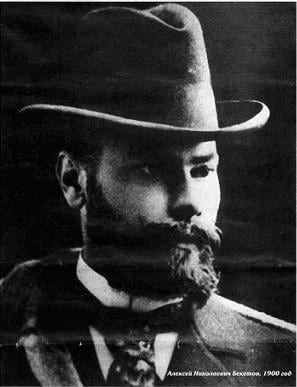 |
| Aleksey Beketov (https://commons.wikimedia.org/wiki/Category:Aleksey_Beketov) |
One day in his letter from Italy, Anton Chehkov let fall a phrase, "Rome, more or less, is like Kharkov." Certainly the comparison is rather brave; however, the famous writer had a basis to compare the classical architecture of Rome with Kharkov. There were wonderful classic architectural ensembles created during that time, which have created "the face" of Kharkov, and the designer was the well-known academic of architecture, Aleksey Beketov. The famous Bank's Wall on the square of Constitution, monumental building of Law establishments on the square of Rudnev, the "palace" of Commercial school on Pushkin Street, are distinguished not only by their majestic Roman style, perfection of composition, and exact proportions, but also by their fine organization of surrounding spaces.
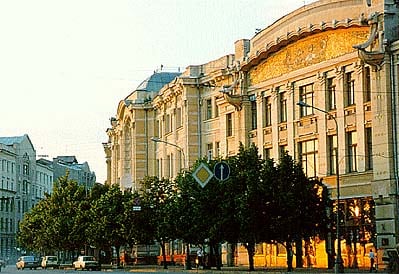 |
| Kharkov Puppet Theater (https://www.ukraine-arabia.ae/travel/gallery/kharkiv/KharkivTheater_of_Dolls1.jpg) |
Aleksey Beketov was born on the 3rd of March, 1862 into the family of an outstanding scientist, the founder of (new for that time) the science of physical chemistry, Nikolay Beketov.
In general, the family of Beketov is rather ancient. One of the ancestors, Nikita Beketov, sometimes was a favorite of Empress Elizabeth. The first Kharkovian of Beketovs became Nikolay Beketov, the chemist, the academician of St. Petersburg Academy of Science. Having finished at Kazan University, Nikolay received a place at Kharkov University and arrived here to work.
He had two brothers. One of them, Andrey, was a famous botanist, biologist, and the rector of the university in Petersburg. He was the grandfather of well-known poet Alexander Block. His daughter, Alexandra, was born, by the way, in Kharkov, in that short time interval when Andrey lived here.
As an interesting aside, during one of the evenings which Andrey arranged, his daughter, sixteen-year-old Alexandra, got acquainted with young scientific-lawyer Alexander Block, whom she found interesting. He at once fell in love. The wedding was in January 1879. After a fine dinner, the newly married couple left for Warsaw. After two years, Alexandra left her husband and returned to her parent's house with small Alexander. As it is known, during childhood, A. Block did not know his father and was brought up in the family of his grandfather, surrounded by the adoration and gentle care of his mother, grandmother and aunts.
The future architect Aleksey Beketov spent his childhood in Kharkov, which then was a brisk provincial merchant city. He was trained in Kharkov Real School. He developed his artistic style in the classes of Dmitry Besperchego, a pupil of the great Bryullov. As a pupil of this school, he prepared for entering Petersburg Academy of Arts and in 1882 he became a student of an architectural faculty.
Having finished at the academy with a gold medal, the 23-year-old Beketov refused favorable invitations to Moscow and Petersburg and came back to his native city.
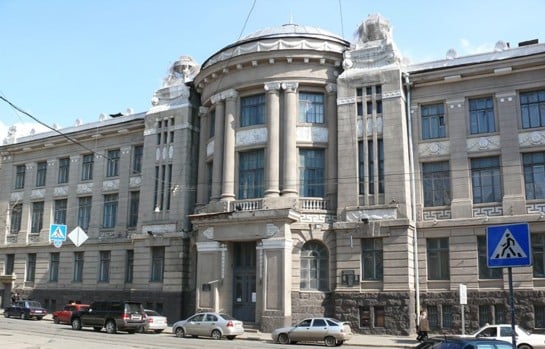 |
| Mechnikov Medical Institute (https://commons.wikimedia.org/wiki/Category:Aleksey_Beketov) |
The roughly developed capitalism of that time promoted the rise of state and private construction in Kharkov. Banks, educational establishments and profitable houses were built. Kharkov was growing from a small merchant town and becoming a big center of southern capitalism in Russia. In 1889 the merchant society proclaimed the close competition for preparing the project of the building of a commercial school. The project of young architect Aleksey Beketov was recognized as the best.
The facade of the building was constructed in the style of the Renascence, without the superfluous decorative modeled design. Despite the aspiration of those merchants for excessive "decoration," Beketov preserved the specific severity in architecture.
Thus, the first Beketov building, which decorated Kharkov, was the Commercial School. After this work, which brought success to the novice, the young architect constructed a whole series of bank buildings. The projects were ordered by the leaders of the roughly developing Kharkov business and industry -- today's buildings of the Automotive Technical School, The Houses of Techniques, the Puppet-Show and others.
According to the status of Petersburg's Academy of Arts, an architect with 3 years construction experience could choose an item and work on a project to receive the rank of Academician of Architecture. Beketov decided to take on the project of a public library with 1.5 million volumes, with reading halls, an art gallery, storehouse and numismatic hall. Beketov completed this grand work in only 9 months. In 1894 the Scientist Soviet gave him the rank of Academnician. The building of the library can be called a gift to Kharkov of "a perfect creation."
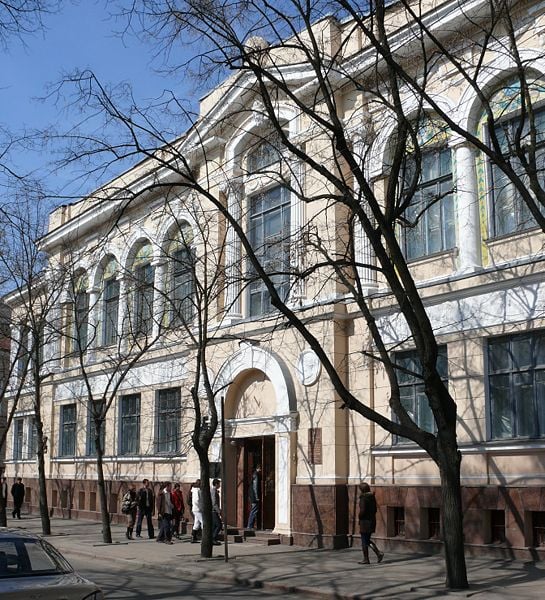 |
| Kharkhov Art Museum (https://commons.wikimedia.org/wiki/Category:Aleksey_Beketov) |
At the age of 27, Aleksey married Ann Alchevskaya, the daughter of Aleksey Alchevskiy, the Ukrainian millionaire, the owner of Kharkov Trade Bank. He financed metallurgical enterprises, and personally oversaw the construction of Donetsko-Yrievskiy factory in the town which was named after him. The Beketovs and the Alchevskiys lived in harmony. Tragically, Aleksey Alchevskiy committed suicide, as he couldn't resolve problems that arose from the crises of the 20th century. And when his family had a financial crisis, Aleksey Beketov sold his mansion while he was constructing the project of the merchant Prihodko (today's The House of Scientists ) to help the family of his ruined father-in-law.
The architect's family lived there for only two years. The building, constructed by Beketov, was distinguished with perfect taste. The facade was in the Greek style, which united different architectural methods and details. This construction was included in the Architectural Encyclopedia of the middle of the 19th century.
The most difficult task for academic Beketov was the project of the Kharkov complex of medical society (now "The Institute of Mechenikov"). But for him it was easy, as he coped with this assignment very well. In our day this building is reputed as one of the most well-constructed.
Besides the big state and public buildings he had constructed, a lot of mansions for merchants, employers and others were also built. In 1914 he built a mansion for manufacturer Ignatischev, which is now the beautiful Kharkov Museum of Art. There was also the mansion of Christine Alchevskaya near it, today's Palace of Culture.
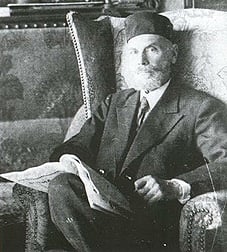 |
|
N. Beketov in Academic shapka. (Public Domain) Russian Academy - http://kharkov.vbelous.net/beketov.htm |
The creative works of Beketov were noticeable not only in Kharkov; his buildings also decorate Belgorod, Dnipropetrovsk, Simpheropol and other cities - but the most monumental buildings he built are in Kharkov. During his life he completed 64 different architecture projects and all of the buildings were individual masterpieces. Here, in his native city, this outstanding architect ended his life.
For citizens of Kharkov, especially for me, Beketov is remembered as a hero of our city. Thanks to him, Kharkovians and guests of this big city can admire the perfect works which he left to us and, for a little while, we can forget about other problems and wonder how people could invent and build such big and beautiful buildings without the help of today's new technologies.
Page created on 8/4/2008 12:00:00 AM
Last edited 2/21/2019 5:07:15 PM
